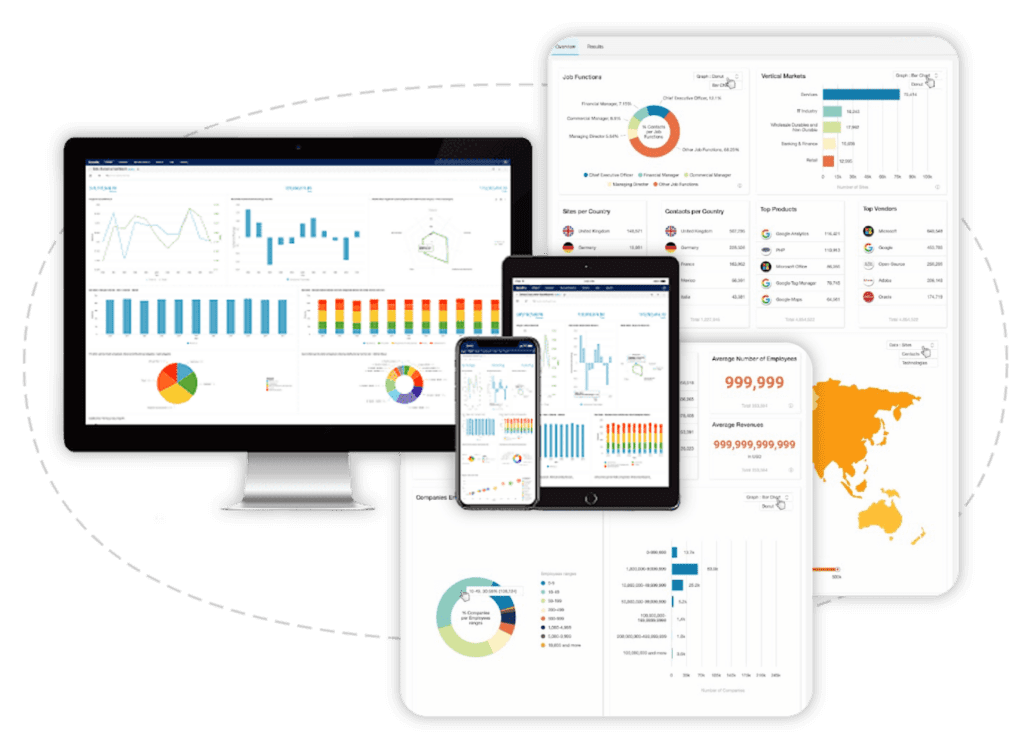How to Attract and Retain High-Quality Tenants in Commercial PropertiesHow to Attract and Retain High-Quality Tenants in Commercial Properties
There are big ideas when asking how to attract and retain high-quality tenants. Then there are little things.
Big ideas see the bigger picture. Modern amenities. Physical access control. Comprehensive building mobile apps.
The little things are vital as the big ideas -taken for granted and only missed when they’re gone. A tenant goes to work but goes to a drive-thru for a quick cup of coffee. They find a parking space near the building. They go inside, already preoccupied, as they pass by clean corridors.
And these tenants don’t even notice it because everything is well. And everything is well because YOU made it so with good management.
With these in mind, here are ways to attract and retain high-quality tenants, from the bigger picture to the little things.
The Importance of Tenant Attraction and Retention Commercial Real Estate
Tenant attraction and retention play a pivotal role in commercial real estate success. The reason why attraction and retention of high-quality tenants are crucial to the success and growth of commercial real estate is because of the following:
- High-quality tenants are reliable. They pay their rent on time for their lease, giving the property financial stability.
- Long-term leases are more profitable. Clients who opt for long term-leases are also considered high-quality tenants because they reduce vacancy rates and turnover costs.
- The bigger the number of tenants, the better. Of course, having more tenants is profitable. But having more high-quality tenants secures the commercial property’s success for a long time.
So how do we attract this kind of tenant and give them a reason to commit long-term with us? With the changing times, it is beyond being in a desirable location with a well-maintained property. Below are ways of attracting and retaining tenants.
Understanding the Needs of High-Quality Tenants
Understanding the needs of high-quality tenants is crucial for effectively attracting and retaining them in commercial spaces. High-quality tenants have specific requirements and expectations regarding their business environment. CRE (commercial real estate) landlords can tailor commercial spaces to meet those expectations by comprehending their needs.
For example, 2021 commercial real estate statistics have revealed that technology now plays a vital role in tenant attraction and retention. Due to the
Covid-19 pandemic impact, 56% of tenants perceived the shortcomings of their company’s digital capabilities. In another survey, 49% of landlords believe that tenant experience technology would help them improve the tenant experience.
Landlords must also identify the amenities and features that appeal to high-quality tenants. These amenities include state-of-the-art technology infrastructure, flexible layout options, and modern design elements. By doing so, they enhance the space’s functionality and overall tenant satisfaction.
Creating an Appealing Commercial Space
Creating an appealing commercial space is essential for attracting tenants and ensuring tenant satisfaction. Its design and layout play a significant role in shaping its appeal.
In this case, build or renovate the space for tenants you want to lease to. If you want to lease to startups, open workspaces, and modern kitchens speak for their less traditional management. If you want to lease to law firms, large individual offices will attract them to see your property.
Modern design elements and aesthetics can elevate the atmosphere, making the commercial attractive to potential tenants. A thoughtful and efficient layout that maximizes space utilization and promotes smooth workflow contributes to tenant satisfaction. Landlords can create an environment that enhances productivity and comfort by considering natural light, ergonomic furniture, and flexible work areas.
Implementing Effective Property Management Strategies
Implementing effective property management strategies is crucial for successful tenant attraction and retention.
Landlords have been utilizing technology for their property management strategies. For example, 68% of property management companies streamline their processes with property management software. In another survey, 80% of CRE landlords believed that tenants would be interested in using building mobile apps.
With technology, business operations can run smoother and improve the tenant experience.
Furthermore, by prioritizing maintenance and repairs, it enhances its appeal to prospective tenants.
Effective communication is another key aspect of property management. Being responsive to tenant concerns and inquiries helps create a sense of trust and reliability.
Key Factors for Attracting High-Quality Tenants
When tenants search online and visit the property, they are already comparing your commercial space to your competition. Here are ways to fulfill what they want to put their business in.
Location: The Foundation of Tenant Attraction
Location is the foundation of tenant attraction, particularly when attracting high-quality tenants. The significance of a prime location cannot be overstated, as it directly impacts the success and desirability of a commercial property.
High-quality tenants seek locations that offer convenient access to transportation hubs. Easy connectivity to airports, train stations, and major highways allows them to efficiently operate their business.
Proximity to essential amenities, including shopping centers, restaurants, and other businesses, adds value to a location. Such convenience is important to tenants, their employees, and their target demographics.
Offering Desirable Amenities and Facilities
Did you know that CRE properties with diverse amenities will have a 12% increased demand by 2025? High-quality tenants prioritize a workplace that goes beyond the basics and provides exceptional amenities and facilities.
For example, Nuveen Real Estate has invested $40 million to have a new park, fitness center, cafe lounge, and conference rooms.
Providing Access Control and Building Operations
Providing access control (PAC) and efficient building operations is essential for ensuring tenant safety, security, and overall satisfaction. Because of this, 64% of CRE landlords are investing in PAC and visitor management technology.
Access control systems are vital in regulating entry and exit points, ensuring only authorized individuals can access the premises. By implementing robust access control measures, landlords can enhance commercial property security, giving tenants peace of mind and protecting their assets.
Additionally, streamlined building operations contribute to the smooth functioning of the property. By leveraging technology solutions, landlords can automate processes, such as HVAC systems, lighting controls, and maintenance scheduling, optimizing energy efficiency and reducing operational costs.
Ensuring Adequate Parking Access
Ensuring adequate parking access is crucial for attracting and retaining high-quality tenants. Sufficient parking spaces with convenient access demonstrate a commitment to tenant convenience and accessibility. High-quality tenants often prioritize parking availability for their employees, clients, and visitors. Offering reserved parking options further enhances the appeal of the commercial property, allowing tenants to have dedicated parking spaces for their staff.
Furthermore, the pandemic has changed tenants and their demographics’ preferences in mobility and parking. They now prioritize safety through touchless interactions. Touches interactions allow entry, exit, and payments without contact. It also makes the parking journey more streamlined.
Additionally, forging partnerships with nearby parking facilities or implementing efficient parking management systems can alleviate parking challenges and provide overflow options for tenants during peak times.
Best Practices for Retaining High-Quality Tenants
Have Clean and Well-Maintained Spaces
Having clean and well-maintained spaces are crucial for creating a positive environment. Cleanliness is aesthetically pleasing and contributes to tenants’ overall well-being and productivity.
Commercial cleaning is vital. With proper commercial cleaning, the risk of the common cold is reduced by 80%, productivity increases by up to 8%, and employees report 46% lesser sick days a year.
Landlords should establish regular cleaning schedules and enlist reliable janitorial services to maintain common areas and shared facilities. This includes keeping lobbies, hallways, restrooms, and other communal spaces clean and presentable.
Building Strong Landlord-Tenant Relationships
45% of landlords state that the major cause of their stress is tenant-related issues. Aside from fostering trust and open communication, property management processes must be standardized to address tenant concerns systematically.
Responsive landlords who address tenant concerns and provide timely solutions demonstrate their commitment to tenant satisfaction. Flexibility in accommodating tenant needs, such as lease terms or space customization, further strengthens the relationship.
Offering Flexibility and Customization Options
Offering flexibility and customization options is essential for catering to the diverse needs of tenants and supporting their business growth. Flexible lease terms accommodate tenants’ evolving requirements, whether short-term leases for startups or long-term leases for established businesses. This flexibility lets tenants align their lease agreements with their business needs and growth plans.
Additionally, offering customization options allows tenants to modify their spaces to suit their unique preferences and operational requirements.
Whether it’s reconfiguring the layout, adding or removing partitions, or implementing technology infrastructure, providing the opportunity for space modifications fosters a sense of ownership and ensures the space meets the tenant’s specific needs.
Moreover, offering expansion opportunities within the property allows tenants to scale their operations seamlessly without the hassle of relocating.
Enhancing Tenant Experience through Professional Services
Enhancing tenant experience through professional services is a key aspect of creating a favorable environment within a commercial property. Partnerships with reliable and reputable service providers can enhance the tenant experience.
Value-added services such as security, cleaning, landscaping, and maintenance allow tenants to focus on their core business activities.
Thanks to facilities management, they can also enjoy a well-managed and aesthetically pleasing environment. These services contribute to the overall satisfaction of tenants and reflect the landlord’s commitment to delivering a high standard of quality and professionalism.
Contact Us for Expert Commercial Real Estate and Property Management Services
Attracting and retaining high-quality tenants maximizes the cash flow of commercial properties. To do so, you must understand their needs. Having a good location and curb design is a start. Maintaining good relationships and improving tenant experiences come after.
Here at Goodale & Barbieri Company, we understand the value of commercial real estate and property management services. Whether you are searching for a commercial property, or need a maintenance request, feel free to reach out to us.
To learn more information about this, please check out G&B

